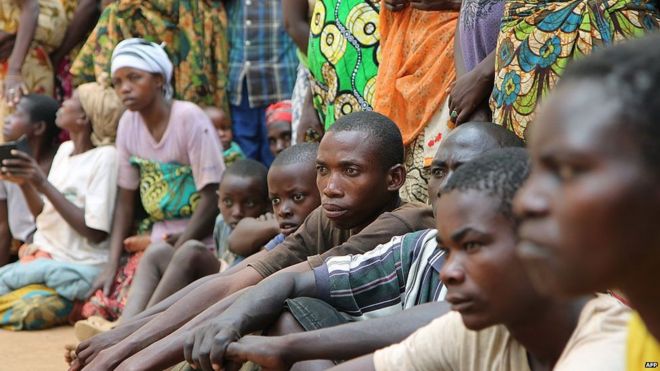By Brittani Howell
Impunity Watch Reporter, The Middle East
DAMASCUS, Syria – The Syrian army, backed by Russian forces, recently retook the ancient Syrian city of Palmyra from ISIS control. ISIS seized the ancient city in May 2015 and after committing terrible atrocities, including a mass execution, ISIS destroyed the ruins of century old civilizations.

Initial reports indicated that the damage to the city was not as bad as many feared, but satellite images obtained by DigitalGlobe showed unreported destruction in Palmyra. Monuments that had been in tact in September, as evidenced by DigitalGlobes previous batch of images, have been destroyed. The recent destruction included five more partly destroyed Roman-era tower tombs and a funerary was reduced to rubble.
Only two columns are left standing from the Arch of Triumph as the rest of the arch was brought down by explosives. The Arch of Triumph, dating back to the era of the Roman emperor Severus, by be easily repaired as it had been last restored in the 1930’s. At the entrance of the 2,000 years old Temple of Bell, members of the Islamic State allegedly wrote on the rocks, “The Islamic State. No entry for civilians or brothers [fighters].” The courtyard of the Temple was left standing but the prayer chamber was destroyed.
Allison Cuneo, project manager for the American Schools of Oriental Research (ASOR) Cultural Heritage Initiatives, stated “What’s strange is there hasn’t been any propaganda related to these tower tombs at all.” While she did acknowledge that the towers could have been damaged in combat she stated that the satellite images show signatures of intentional destruction.
Michael Danti, a Boston University archeologist, emphasized that a lot of damage to Palmyra was there prior to ISIS’s arrival. He stated, “That might get lost in translation over time. They were the primary culprit, but not the only culprit.”
Mamoun Abdulkarim, Syria’s antiques director stated that it would most likely take as long as five years to restore the site. He further stated that most of the important works were transported to government held Damascus at the time ISIS captured the town. However, he warned “there are still large items, like the sarcophagi, which weigh three to four tons and we could not move. Those are what worry me.”
The head of antiques for Palmyra, Khaled al-Assad, was killed after he allegedly hid artifacts and refused to give their location to ISIS. The Syrian army also uncovered a mass grave which contained over 25 bodes, including women and children.
A plan to detonate 4,500 mines that were linked to a telephone network had not been carried out, because the man responsible was killed by Assad loyalists. Russian army experts are starting to remove the mines which would take months.
For more information, please see:
CBS News – Devastation Left Behind by ISIS in Syrian Town of Qaryatain – 4 April 2016
Atlas Obscura – Newly-Released Satellite Images Show Shocking Destruction of Palmyra – 1 April 2016
The Guardian – ISIS Destruction of Palmyra Antiques Revealed in New Pictures – 1 April 2016
The Huffington Post – Palmyra Taken Back From ISIS But Striking Photos Reveal the Full Devastation They Caused – 1 April 2016


